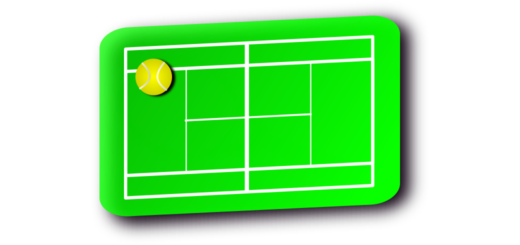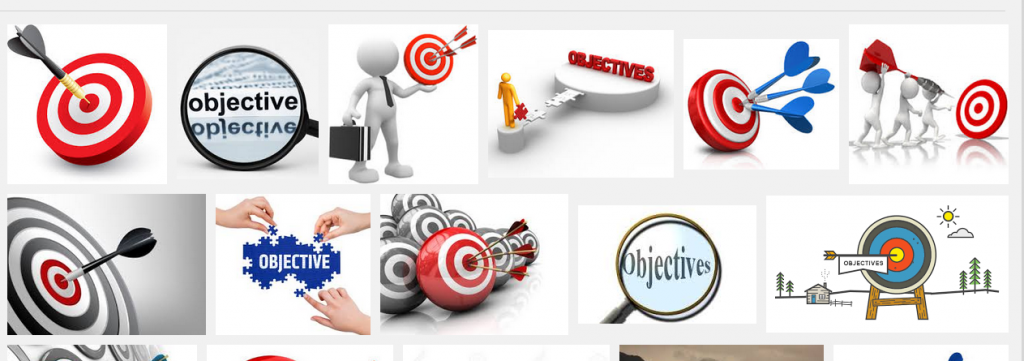
In the past, I had a certain difficulty with learning strategy. It wasn’t that I didn’t know what strategy was (how to win the game, win the league or, even, how to lose gracefully) but I got bogged down in terminology; particularly the difference between aims, objectives and goals.
Asking Google:
objective
/əbˈdʒɛktɪv/
noun
1. a thing aimed at or sought; a goal.
“the system has achieved its objective”
aim
/eɪm/
noun
1. a purpose or intention; a desired outcome.
“our primary aim is to achieve financial discipline”
goal
/ɡəʊl/
noun
2. the object of a person’s ambition or effort; an aim or desired result.
I love the way that goal is described both in terms of aim and object[ive]. I have done a bit more Googling and can not find a definitive distinction between the two. The objective is the target and, as nouns, so are the aim and the goal. (And, of course, target is another one although that seems to be clearly and generally used in terms of something that is measured numerically … I think!?.) An image search on Google for the word objective adequately sums up the case:
aim has even more targets along with a couple of cross-hairs.
I still can’t tell the difference and, quite honestly, I think people just find their own distinctions and run with those so we find the words used differently in different circumstances, in different methods and in different areas of work and life. One person’s aim is another’s objective is another’s goal is another’s target. Is this just getting bogged down in terminology? I think so!
However, in business and operational planning, at least, the terms are generally used in the creation of a hierarchical structure where one thing leads to another. A goal might be the ultimate aim (!?) whereas an objective might be something subsidiary that needs to be achieved on the way to the goal. The critical thing in this is that there should be agreement as to what the terms mean amongst everybody that needs to understand them. If a document is being created, the specific meaning of the terms for the document might be presented in the document so that everyone is, and remains, clear on what is actually desired.
It is possible, of course, to avoid the whole confusion in the first place if you take a different planning model other than Strategic Planning or Business Development Planning. When an organisation exists to bring about change of some sort, a Logic Model or Theory of Change can be a much more effective way of planning because they are driven by outcomes: ‘What will be different after we have carried out this plan?’ They still appear to suffer from some terminological crossovers but the terms Inputs, Activities (or actions), Outputs and Outcomes (or impacts) are clearer, perhaps, than aims and objectives. My own approach these days tends to be flexible. In a strategy towards a single outcome, I might just have an overall aim, subsidiary objectives and actions. In a multi-strand programme, I might define and overall impact and then define individual strands in terms of what they are, what actions need to be implemented and the outcomes of those actions; linking back if necessary to how these outcomes contribute to the overall impact. There are different ways of doing things and some tools are better than others only in relation to what we are using them for.
This was, at one stage, all confusion to me until, one day, I decided that I needed a simple and, to me, abstract way to redefine strategy in my mind – remove the confusion that had been built up by studying different methods of strategic planning. For reasons I can’t remember, I decided that winning the singles finals at Wimbledon was the aim. I started typing and soon came to the realisation that, once the ultimate aim was clear, I simply had to write down all the conditions that were needed in order to fulfil it and the actions that had to be taken in order to create those conditions.
The below is in no way comprehensive or even correct in how it relates to playing tennis. It’s not even marginally good in how it separates out aims and goals. However, by the time that I had got thus far, I had cleared up my confusion about jargon. Strategy is a simple concept. There are different ways to do it and it can be difficult to get it right – even without opponents. The main thing is to use the appropriate tools to get clarity about what is to be done and how.
Strategy for a Tennis Match
- Object / Mission: Win the Game
- Is this realistic – who am I playing?
- Vision
- Winning the game
- Critical Success Factors
- Breaking Service
- Not having service broken
- Goals
- Serve Fast
- Don’t let posture give away direction of serve
- Hone reactions to receive fast balls and return them with accuracy away from the other player or at their weak side.
- Aims
- Be fit
- Be strong
- Have Stamina
- Serve well
- Be good at receiving fast balls in different parts of the box
- Be good at receiving balls in multiple parts of the court from random directions
- Actions
- Practice all of the above individually
- Harness technology to provide training against a tough opponent
- Train often with combined aims of building both speed and stamina
- Secure funding to be able to focus exclusively on tennis
- Have a trustworthy and efficient manager
- Secure the best available facilities
- Gain lots of experience in tournaments
- Travel to engage with challenging opponents
- Aim to win where possible
- Don’t be too disappointed if beaten by world-class players
- Engage professional consultancy
- Physiotherapist
- Dietician
- Trainer – mental, tactical
- Know the game – who is involved and what level they are at
- Set short, medium and long-term goals – strategise!
An interesting resource in backwards thinking is the Centre for Theory of Change. There is lots more out there on the interweb should you wish to discover it. However, the thinking model is clear: Start with the end in mind.

